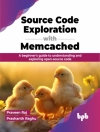
We live in an ‘information age, ‘ but information is only useful when it is interpreted by people and applied in the context of their goals and activities. The volume of information to which people have access is growing at an incredible rate, vastly outstripping people’s ability to assimilate and manage it. In order to design technologies that better support information work, it is necessary to better understand the details of that work. In this lecture, we review the situations (physical, social and temporal) in which people interact with information. We also discuss how people interact with information in terms of an ‘information journey, ‘ in which people, iteratively, do the following: recognise a need for information, find information, interpret and evaluate that information in the context of their goals, and use the interpretation to support their broader activities. People’s information needs may be explicit and clearly articulated but, conversely, may be tacit, exploratory and evolving. Widely used tools supporting information access, such as searching on the Web and in digital libraries, support clearly defined information requirements well, but they provide limited support for other information needs. Most other stages of the information journey are poorly supported at present. Novel design solutions are unlikely to be purely digital, but to exploit the rich variety of information resources, digital, physical and social, that are available. Theories of information interaction and sensemaking can highlight new design possibilities that augment human capabilities. We review relevant theories and findings for understanding information behaviours, and we review methods for evaluating information working tools, to both assess existing tools and identify requirements for the future. Table of Contents: Introduction: Pervasive Information Interactions / Background: Information Interaction at the Crossroads of Research Traditions / The Situations: Physical, Social and Temporal / The Behaviors: Understanding the ‘Information Journey’ / The Technologies: Supporting the Information Journey / Studying User Behaviors and Needs for Information Interaction / Looking to the Future / Further Reading
Tabela de Conteúdo
Introduction: Pervasive Information Interactions.- Background: Information Interaction at the Crossroads of Research Traditions.- The Situations: Physical, Social and Temporal.- The Behaviors: Understanding the ‘Information Journey’.- The Technologies: Supporting the Information Journey.- Studying User Behaviors and Needs for Information Interaction.- Looking to the Future.- Further Reading.
Sobre o autor
Ann Blandford is Professor of Human-Computer Interaction in the Department of Computer Science at UCL, and Director of UCL Interaction Centre. Her research focuses on amplifying human capabilities through design, including work on minimising cognitive slips and on sensemaking. An important focus of her work has been on the use and usability of Digital Libraries, taking a multidisciplinary approach that considers the design of technology, the knowledge and motivations of users, and the context within which information work takes place to develop a rich understanding of the design and use of such systems. She has been technical Chair for conferences including IHM-HCI 2001, HCI 2006, and Nordi CHI 2010, and she has edited special issues of the International Journal of Digital Libraries and Information Processing and Management.Simon Attfield is a Senior Research Associate and Lecturer at UCL Interaction Centre, University College London, where he has worked since receiving his Ph D in 2005.His research interests lie in understanding how people think and work with information and what this means for the design of human-centred interactive systems. He has conducted numerous field and lab studies in information interaction, including studies of national news organizations (The Times, ITN), legal firms (Richards Butler, Freshfields Bruckhaus Deringer) and NHS healthcare settings. He has also consulted to news, legal and medical information providers; published internationally in numerous peer-reviewed academic outlets; presented research internationally to both academic and commercial audiences; and served on review committees for numerous international journals, conferences and workshops.











